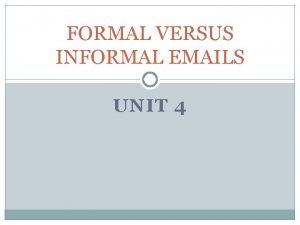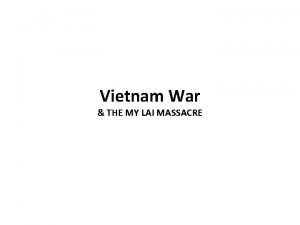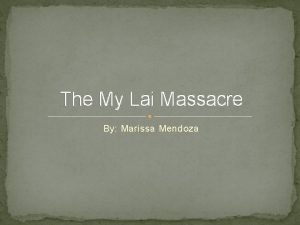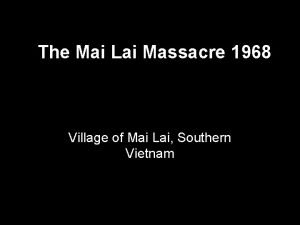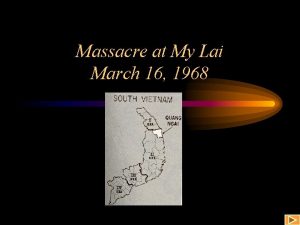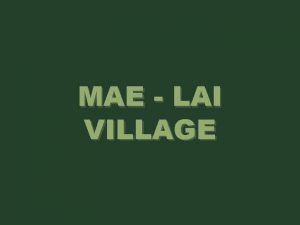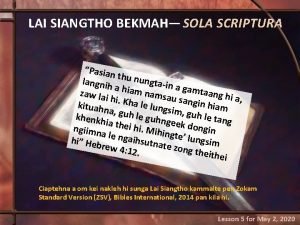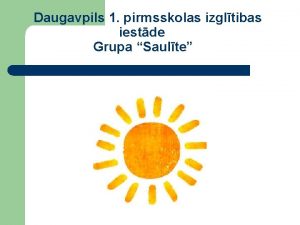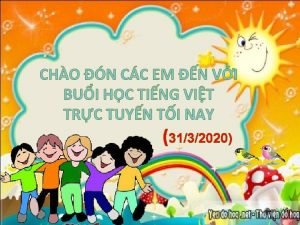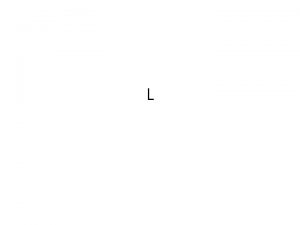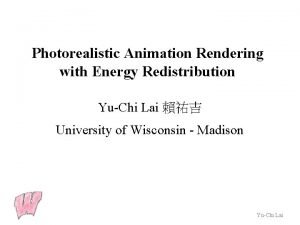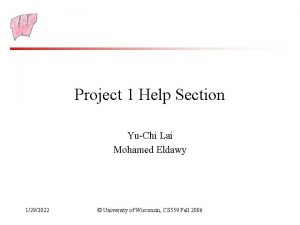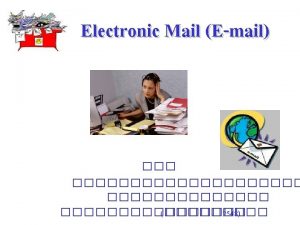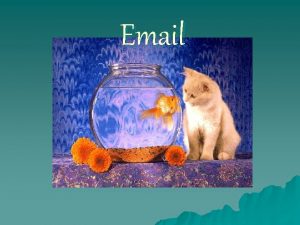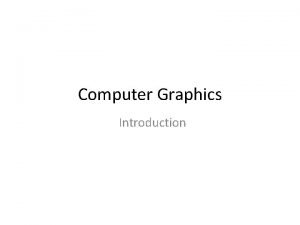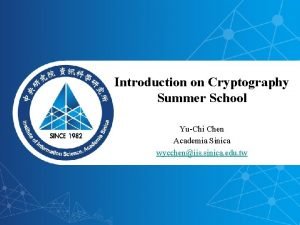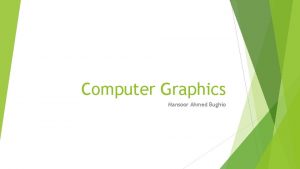Introduction to Computer Graphics YuChi Lai EMail yuchics














- Slides: 14

Introduction to Computer Graphics (電腦圖學導論) Yu-Chi Lai 賴祐吉 E-Mail: yu-chi@cs. wisc. edu Webpage: http: //faculty. csie. ntust. edu. tw/~yu-chi/index. php/Intro. CG 2009/Main Office: RB-305 Office Hour: Mon, 2: 00 PM ~ 4: 00 PM or by appointment 09/16/09 © 2009 NTUST

Today • Course overview and information • Digital Images 09/16/09 © 2009 NTUST

What is Computer Graphics? • Technically, it’s about the production, manipulation and display of images using computers • Practically, it’s about movies, games, design, training, art, advertising, communication, … 09/16/09 © 2009 NTUST

This Course: Building Blocks • Images and computers – Sampling, Color, Filters, … • Drawing in 2 D – Drawing lines and triangles, clipping, transformations • Drawing in 3 D – Viewing, transformations, lighting, real-time graphics • Modeling in 3 D – Describing volumes and surfaces, drawing them effectively • Miscellaneous topics – Raytracing, animation, … 09/16/09 © 2009 NTUST

Textbooks and Readings • Peter Shirley, “Fundamentals of Computer Graphics”, A. K. Peters, 2002 • Mason Woo, et al. The Open. GL Programmer's Guide. – The definitive guide to Open. GL, and a reasonable description of general real-time 3 D graphics – It doesn’t really matter which edition – the differences are not pertinent to this class, – Html version. • Tomas Akenine-Möller and Eric Haines. Real Time Rendering, 3 e. • Class readings – Online via the library’s reserve system – see class web page – A collection of papers, textbook chapters, and other documents – Some essential material not contained in the textbook 09/16/09 © 2009 NTUST

Projects • There will be four projects for the course, spread evenly through the semester • Project 1: Image editing • Project 2: Running a maze • Project 3: Roster Coaster • Project 4: Building a virtual theme park • You must submit all four in order to pass the course – This rule has never been waived 09/16/09 © 2009 NTUST

Homeworks • There will be 4 ~ 5 homeworks • They are intended primarily to explore topics further and to prepare you for the exams • Some essential techniques will be presented only in homework – For example, an review of linear algebra 09/16/09 © 2009 NTUST

Grading (approximate) • • • 30% Midterm and Final 60% Projects (15, 12. 5, 20) 10% Homework Everyone must write up their own homework For projects 1 and 3, 4, you have the option of working in pairs • You will only get higher score if I need to adjust the score. 09/16/09 © 2009 NTUST

Lab Facilities • Room RB-504 contains machines for use in this class • They have adequate hardware (circa 2001) and the software to make it work • There are benefits to working in a lab with your classmates – For instance, the blackboards frequently display useful hints that someone else scrawled – But they also sometimes have incorrect information!! 09/16/09 © 2009 NTUST

Software Infrastructure • FLTK will be the user interface toolkit – Provides windows, buttons, menus, etc – C++ class library, completely portable – We are currently at version 1. 1. 0 rc 6, available for free: www. fltk. org • Open. GL will be the 3 D rendering toolkit – Provides an API for drawing objects specified in 3 D – Included as part of Windows and in most Unix distributions • Although getting hardware acceleration may take some doing • Visual Studio. NET will be the programming environment for grading • To be graded, your projects must compile under Visual C++ on the machines in room RB-504 09/16/09 © 2009 NTUST

C++ • You must complete large software projects in C++ without step by step instructions • There is a great deal of freedom in the projects, which requires that you do your own software design • If you are not comfortable in C++, you will have to take action • There are tutorials intended to teach you C++ assuming you know Java: – http: //www. cs. wisc. edu/~hasti/cs 368/Cpp. Tutorial/index. html – These are intended for the course CS 368, but just do the tutorials 09/16/09 © 2009 NTUST

Rules • You must write your own homework. • You use codes from web page but you need to write the contribution • You cannot copy codes from your classmates and your friends who took this class before. – If I find out, you will fail the class and face the penalty from school. • The notes are in English. • In exam, please don’t translate the special vocabulary into Chinese. 09/16/09 © 2009 NTUST

Admin Questions? 09/16/09 © 2009 NTUST

Next Time • Image • Color 09/16/09 © 2009 NTUST
 Kop chai lai lai
Kop chai lai lai Graphic monitor and workstation in computer graphics
Graphic monitor and workstation in computer graphics Graphics hardware in computer graphics ppt
Graphics hardware in computer graphics ppt Points and lines in computer graphics ppt
Points and lines in computer graphics ppt Format of informal email
Format of informal email Lai ba ying ye zhong
Lai ba ying ye zhong My lai massacre
My lai massacre Tôi biết đấng nắm giữ tương lai
Tôi biết đấng nắm giữ tương lai Mỹ lai massacre
Mỹ lai massacre Mai lai massacre 1968
Mai lai massacre 1968 Mai lai massacre primary sources
Mai lai massacre primary sources Mae lai village chiang mai
Mae lai village chiang mai Laisiangtho
Laisiangtho Kā lai izaudzē
Kā lai izaudzē Dừng chân nghỉ lại nha trang
Dừng chân nghỉ lại nha trang




